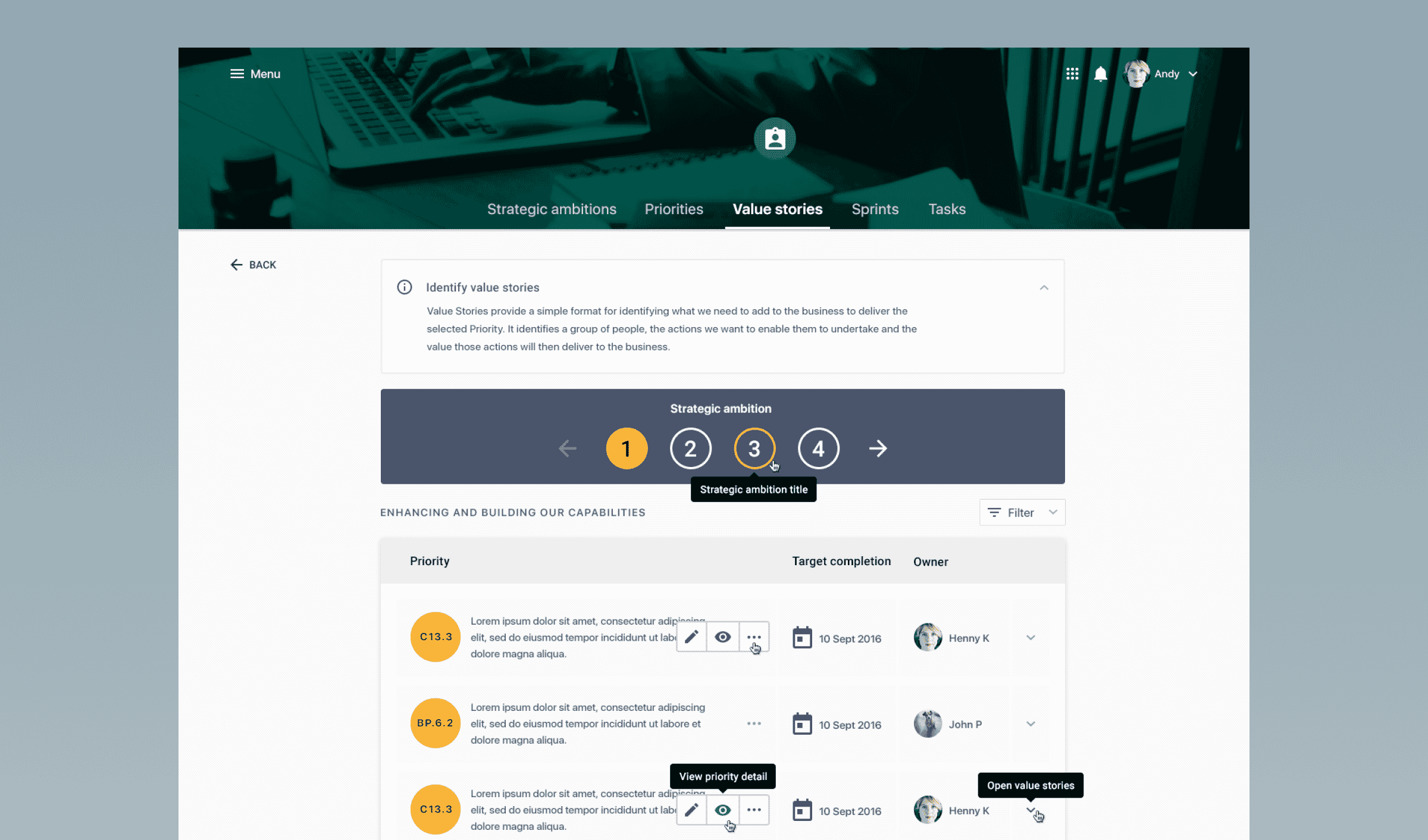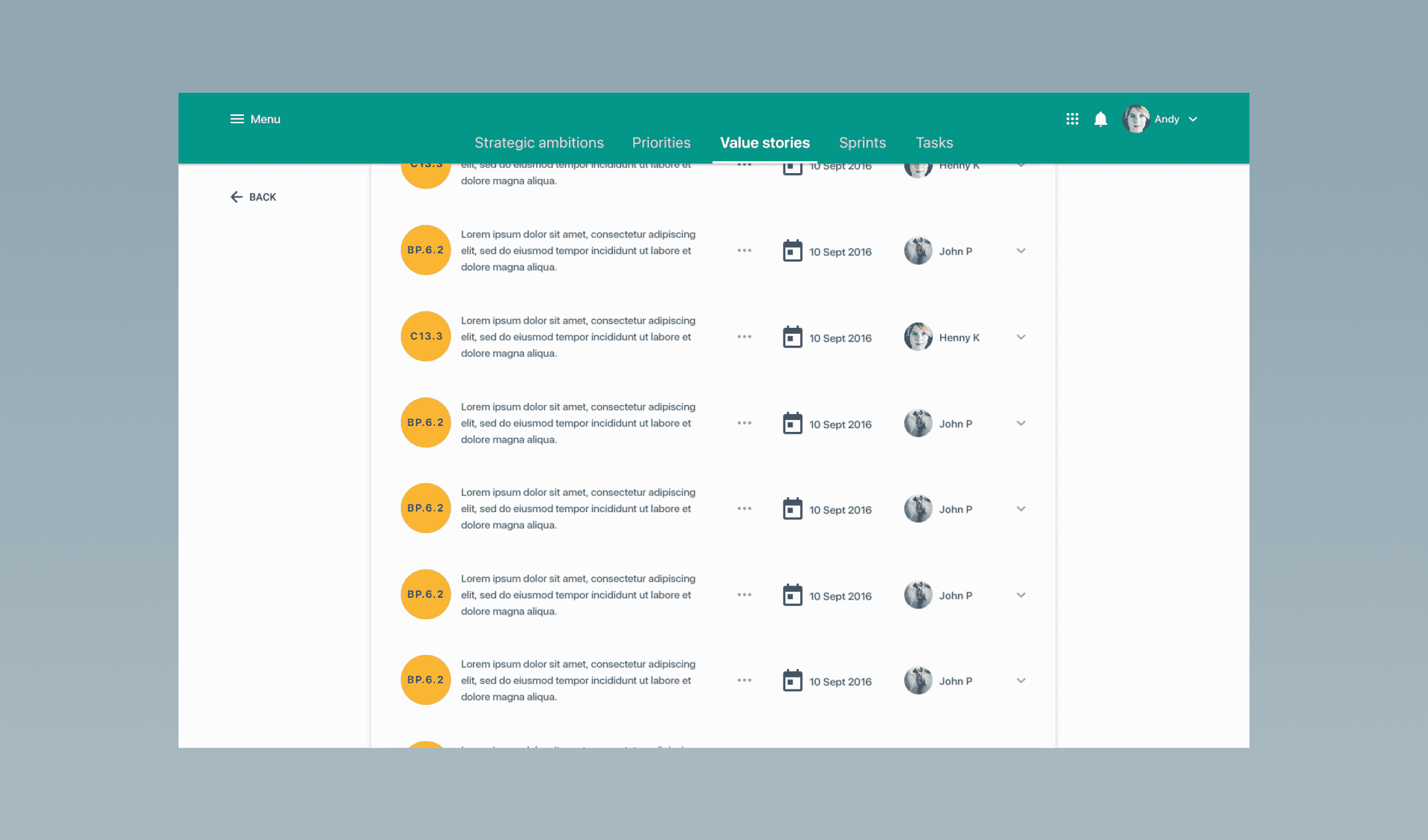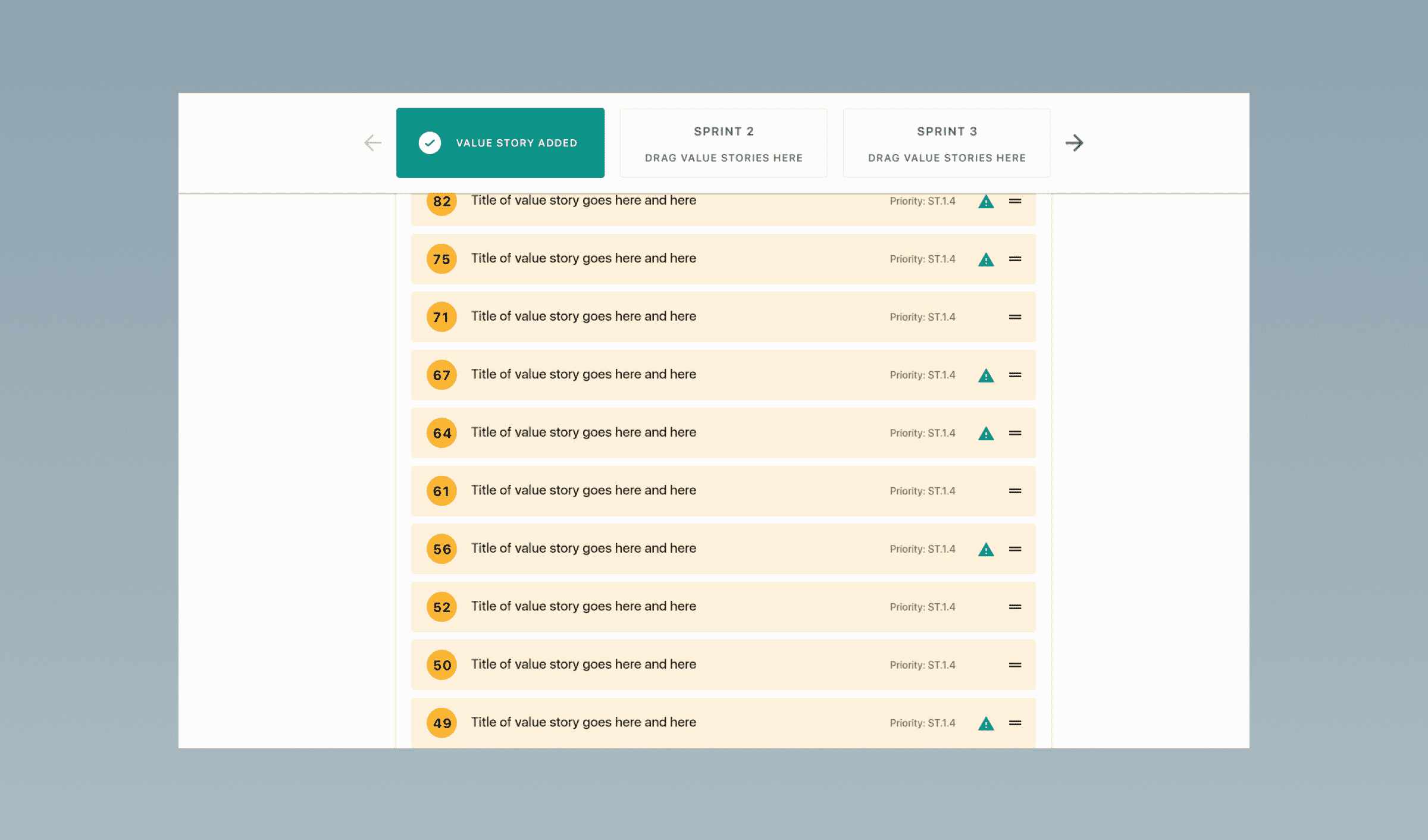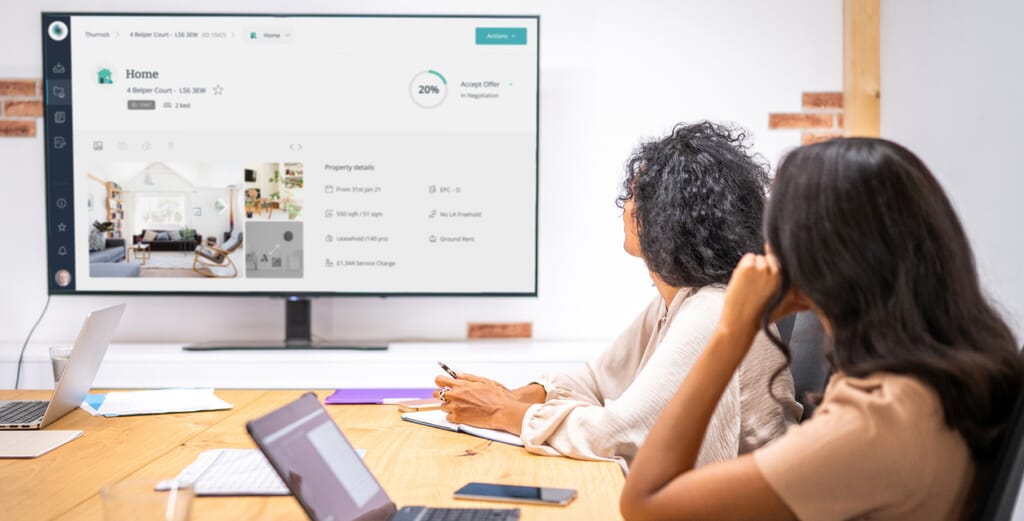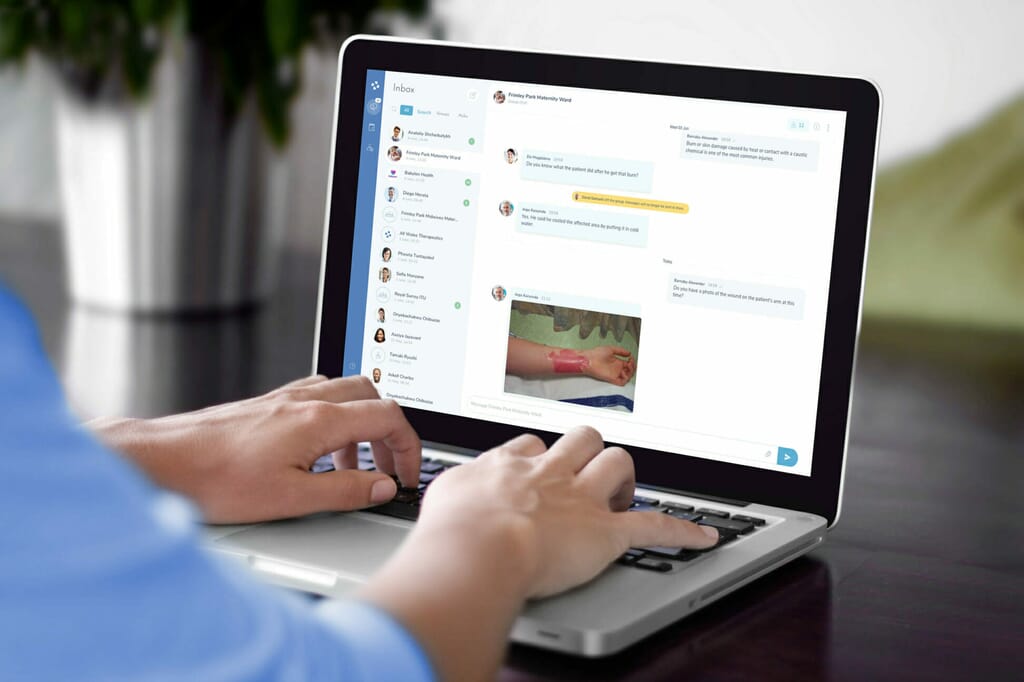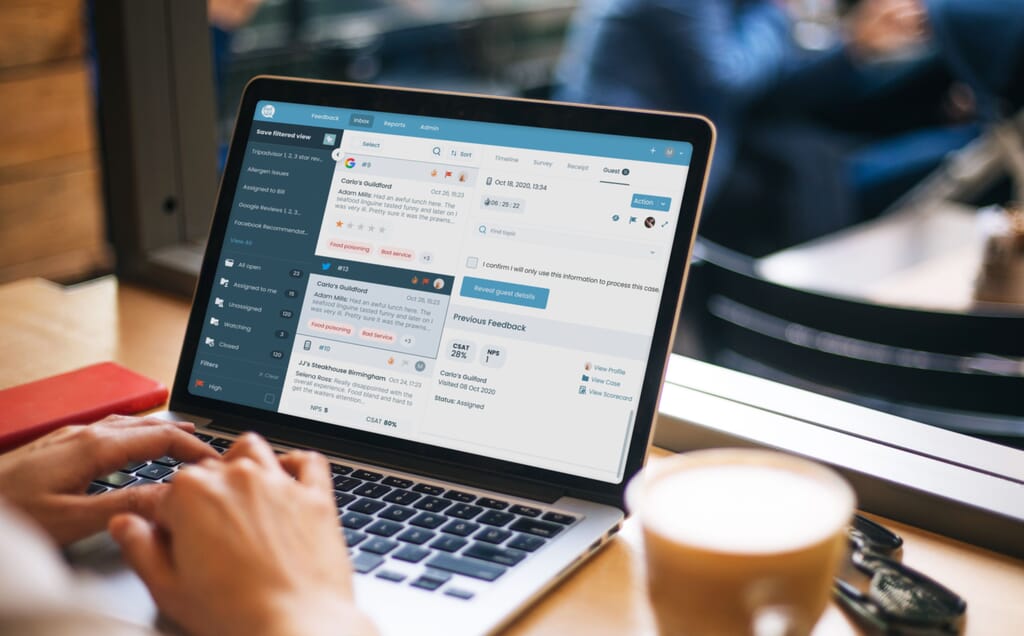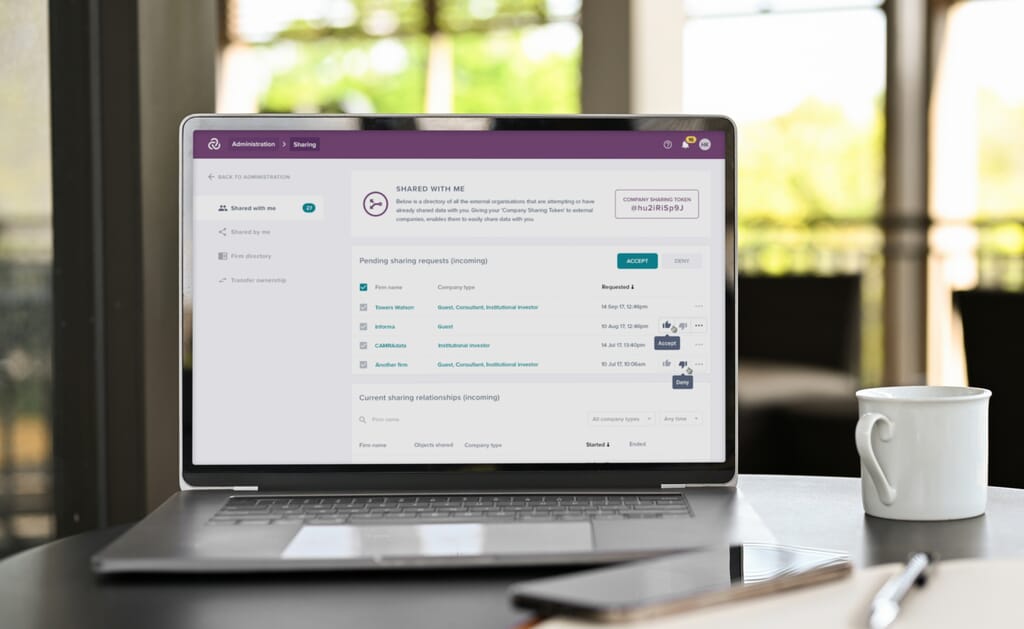
Facilitating organisational change programmes for businesses
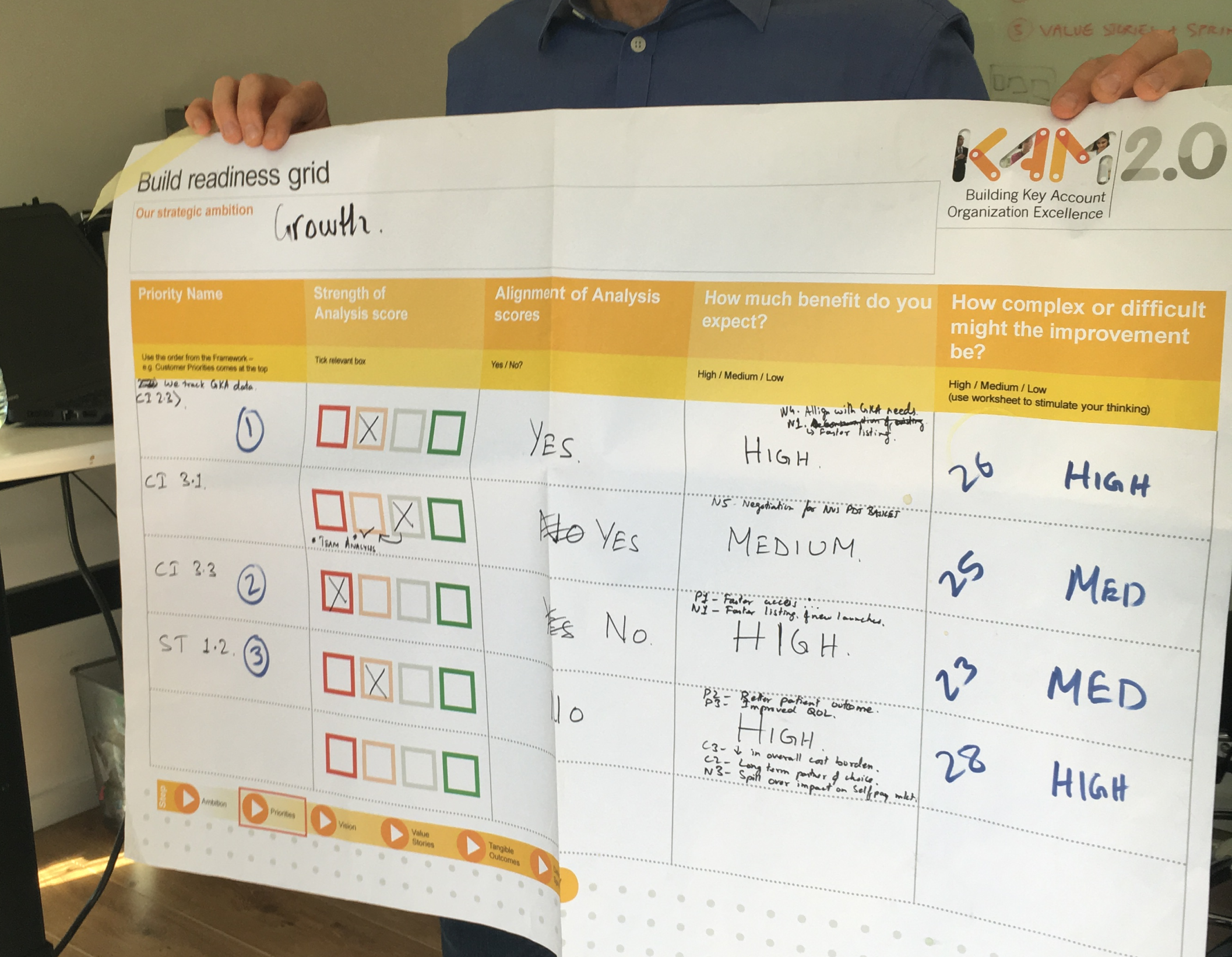
At a glance
We designed an interactive platform to replicate a client’s in-person stakeholder workshops for strategic organisational change management. This tool helps organisations plan, activate, and track the impact of changes, offering both a high-level overview and the ability to drill down into specific details.
The platform guides users through a five-step process, from high-level change vision to granular task management, ensuring alignment at all levels. Senior managers access a dedicated admin area to monitor progress, with varying permissions for participants.
A clear and intuitive information architecture underpinned the design, supporting a seamless user experience across the full agile UX design process.
Project type
Sector
Services provided
Digital transformation
The client, a change management consultancy working with clients such as top 10 global pharma companies, needed help to effectively replicate their in-person workshops through a guided digital experience. Their physical workshops were highly interactive, guiding stakeholders through a five-step process of planning, activating, and tracking strategic organisational changes. The challenge lay in creating a self-service SaaS tool that preserved the workshop’s collaborative and detailed nature, while allowing participants to navigate a structured, yet flexible, change management journey.
We understood that the result needed to be intuitive, scalable, and maintain the depth of the original sessions — an ideal case for applying a user-centred, agile UX design process.
Workshop observation
Our role was to translate complex offline workshops into a digital experience that enabled users to define strategic ambitions, identify priorities, plan sprints, and track tasks. Each step had to be interactive and engaging, offering participants the ability to drill into granular details while maintaining an overall view of the change process. Additionally, an area for senior managers to monitor participant progress, with specific permissions to control visibility and editing across the tool was required. Ensuring a seamless user experience, while replicating the depth and structure of the workshops, was a key challenge.

Information Architecture
We began by closely observing the client’s in-person change management workshops, which allowed us to gain a deep understanding of how participants engaged with the five-step process for organisational change. From this, we created detailed user journey flows and mapped the platform’s information architecture, ensuring a seamless translation of the offline experience into a digital format. The challenge was replicating a structured process that allowed participants to explore both high-level strategic visions and granular task details, while enabling senior management to monitor progress via a high-level dashboard. This foundation was key to supporting an agile UX design process.
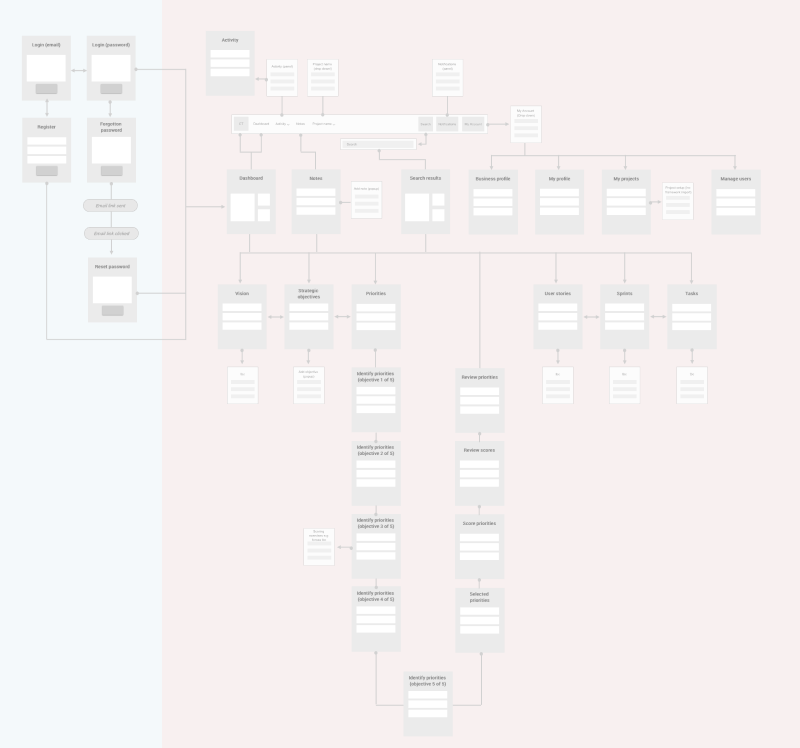
Strategic ambitions
We collaborated closely with the client to observe their offline workshops, gaining deep insights into the exercises used with their customers. Our challenge was to replicate these interactive, in-person sessions into an online environment that allowed for both participant engagement and senior management oversight.
At a macro level, the first stage of this process focused on enabling users to define their Strategic Ambitions, helping them identify what was critical and achievable. We designed a responsive, five-step navigation structure for the interactive tool. This design ensured compatibility across various devices, including potential future tablet integration.
A key focus was ensuring the tool had a clear distinction between the participant experience and the admin area used by senior managers.
This distinction was achieved through a unique design style for each section, incorporating SaaS UI design principles with distinct icons and colour-coding to make navigation seamless and intuitive. This approach ensured that both participants and senior managers could easily navigate the platform, fulfilling their individual roles without confusion.
The result was a flexible, future-proof tool that successfully brought the client’s offline workshop processes into an engaging and effective online platform.
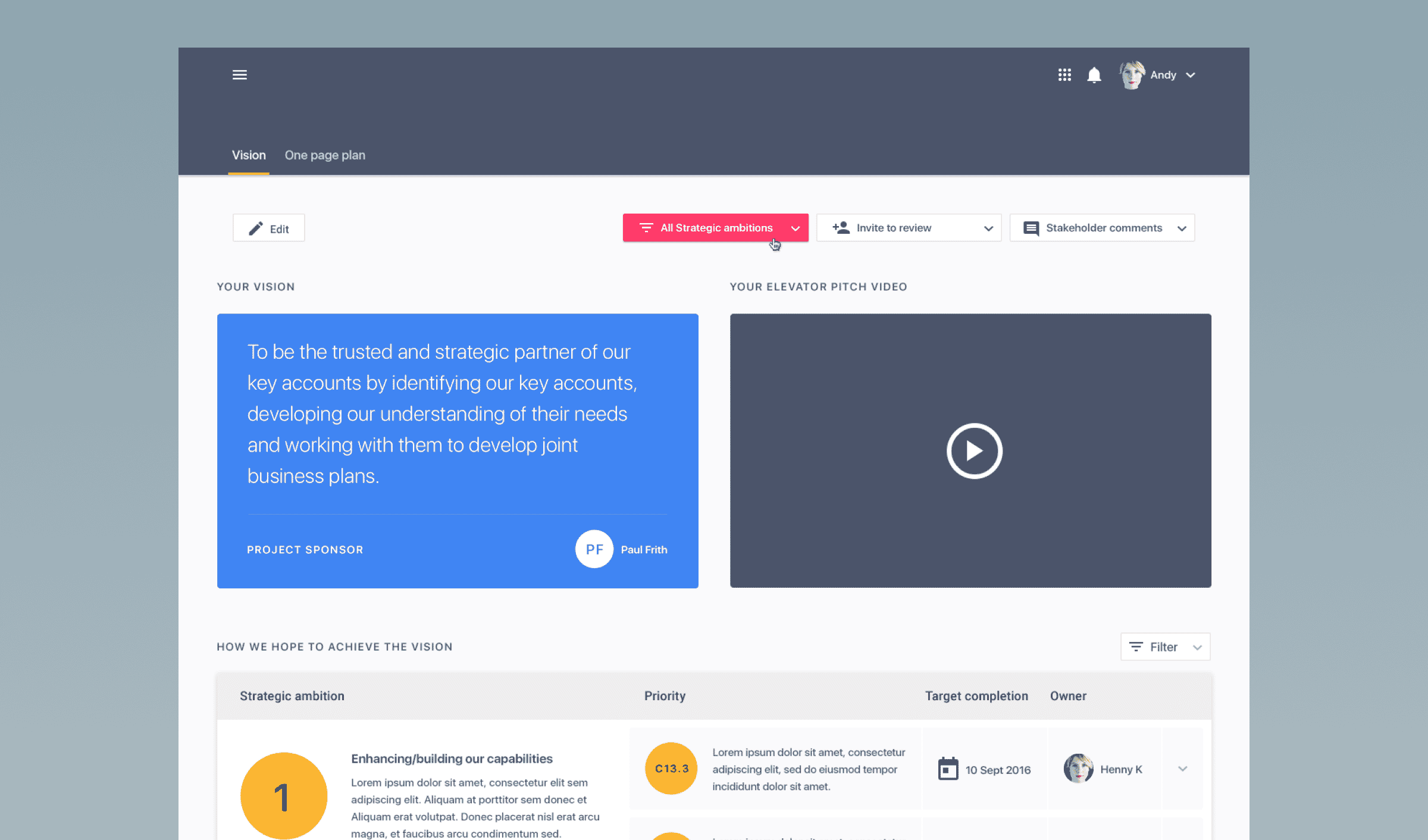
Identifying priorities
For the next level of identifying priorities we created a way to help users break down their Strategic Ambitions into specific, actionable priorities. To streamline this process, we created a multi-layered navigation system that enabled users to click through each ambition and assign relevant priorities. The challenge was integrating this additional layer of navigation alongside the existing five-step interactive tool navigation, as well as previous and next step controls, without overwhelming the user.
We implemented multiple states for each step of the tool, including default, selected, and view-only options to provide a seamless user experience. Once users identified their priorities for each ambition, they were prompted to select up to five key priorities to focus on and score them based on predefined criteria. This process ensured that teams could focus on the most impactful areas of change, while keeping their progress aligned with strategic goals.
The navigation design, while complex, was essential in creating an intuitive user journey, allowing participants to focus on the task at hand while senior management could easily track progress and decision-making.
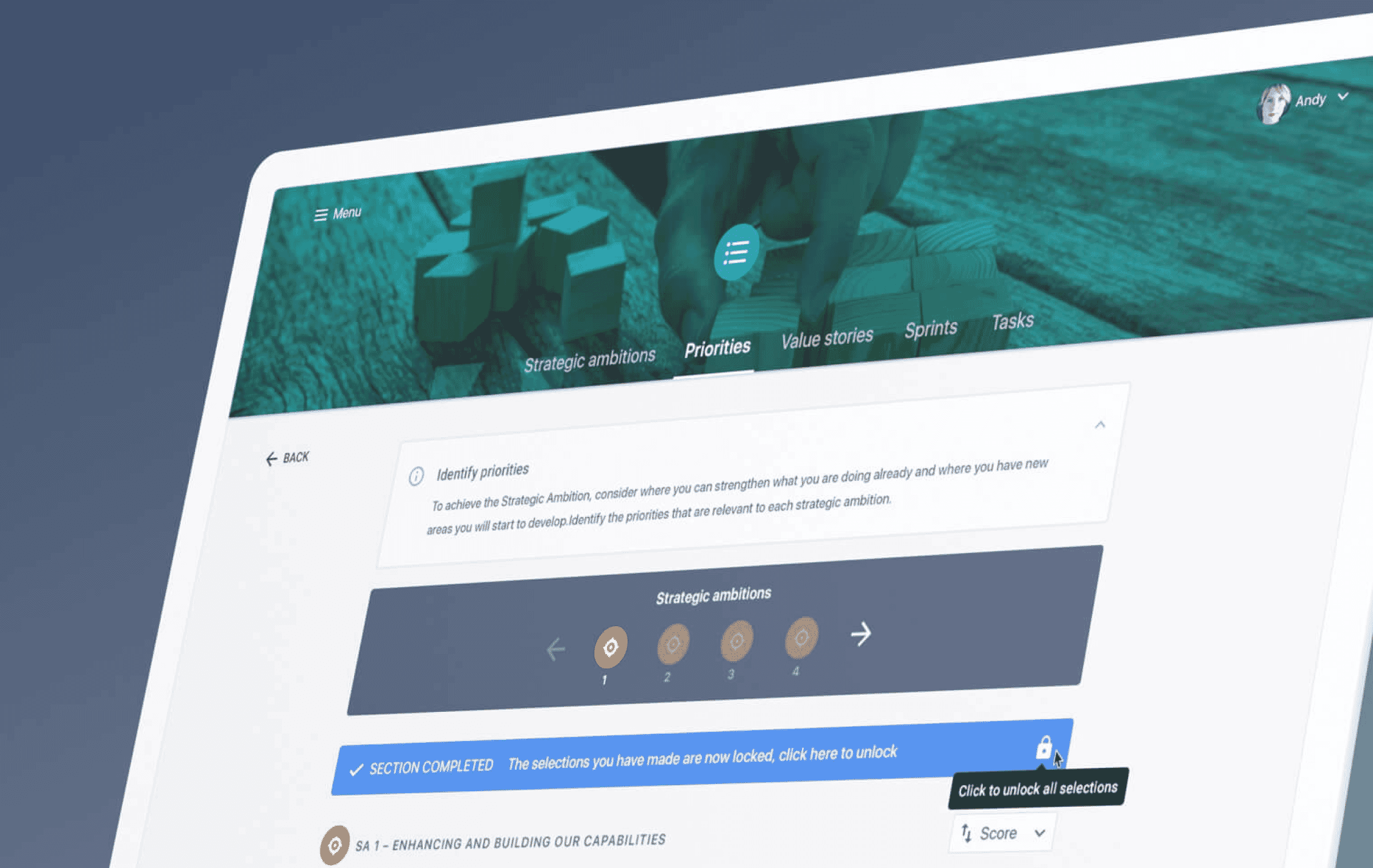
Value stories
In the “Value Stories” stage, users focused on identifying actions needed to deliver their selected priorities. Value stories outlined the groups involved, the actions they should take, and the expected business value. As the tool progressed, the UX challenge increased due to the growing complexity and the need to retain choices from previous steps.
To solve this, we designed a system where users could easily access previous information without navigating back through steps. Additionally, an in-place editing feature allowed users to adjust previous inputs seamlessly.
Users then shortlisted and scored around 10 value stories per priority, assessing them based on quality, urgency, and strategic importance, resulting in a value score that ranked each story’s overall benefit.
Sprint planning
In the Sprint Planning stage, users begin organising selected value stories into short, time-bound sprints aimed at delivering incremental business value. Each sprint included 3-5 value stories to ensure manageable, high-impact goals.
We designed a drag-and-drop interface that allowed users to create “sprint buckets” and move value stories into them. Various interface states were implemented, such as dragging, dropping, and success states, with a pinned header for long lists.
Each sprint was assigned a “Sprint Score,” providing measurable value, and guiding users in prioritising their efforts for maximum impact.
Task management
The Task Management stage was where users track progress at the most granular level of the tool. Each value story within a sprint can have multiple tasks assigned to it. Despite task management often being a standalone product, we designed an integrated system that fits within the existing structure and style of the interactive tool.
Tasks were further organised into “to-do categories” for better tracking. Tasks could be added anytime, including from the senior management “One Page Plan,” ensuring flexibility and real-time updates as sprints progressed.
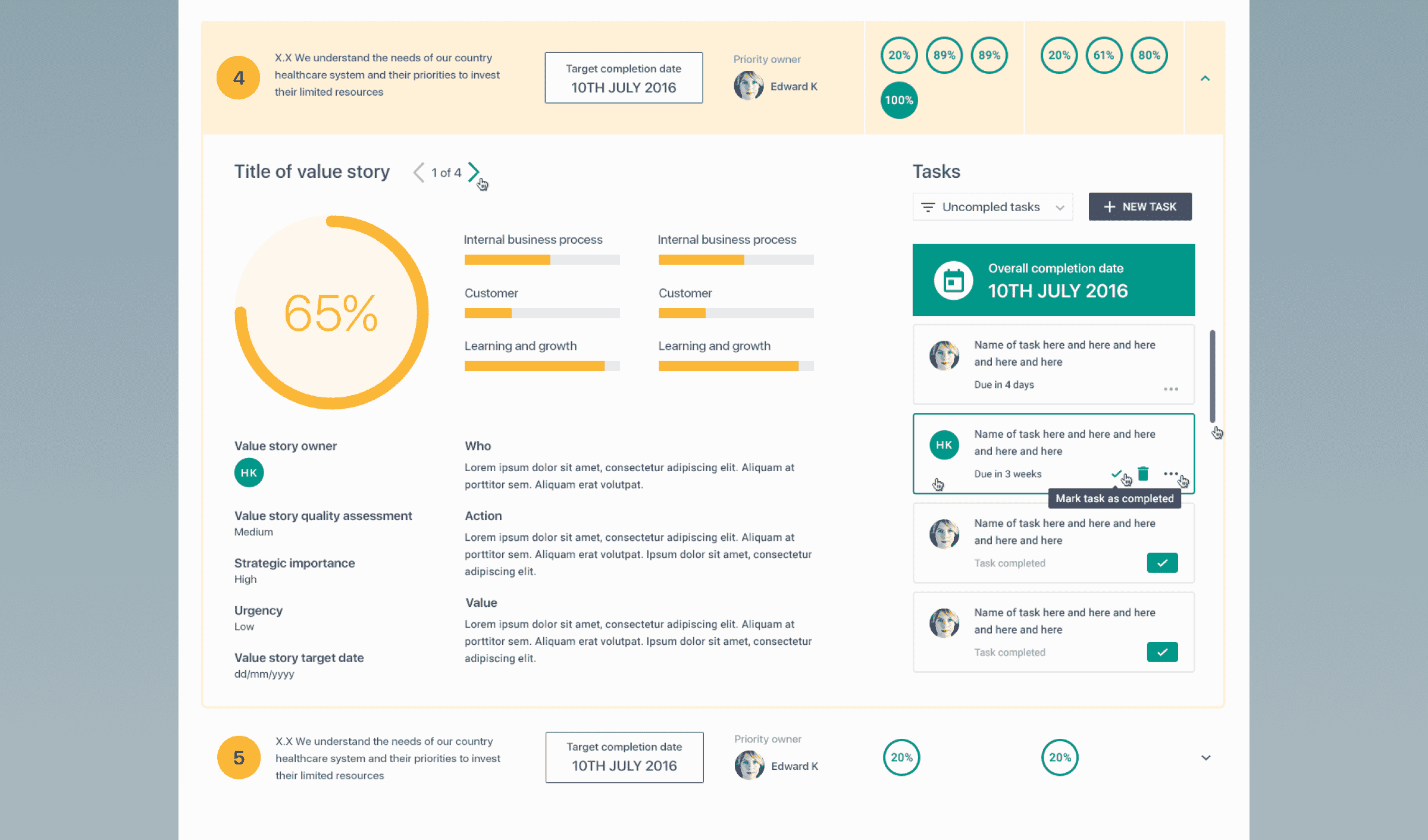
Strategic overview
We designed a dedicated area that allowed senior managers to oversee and interact with all elements of the five-step process tool. This section featured the One Page Plan, which displayed all details from the interactive tool, allowing managers to review, edit, and drill down into any step.
It also included a stakeholder management system to control access and add comments. Additionally, the area had a task management tool, a dashboard highlighting key metrics, and a Vision for Change page outlining strategic objectives, providing a comprehensive overview for decision-making.
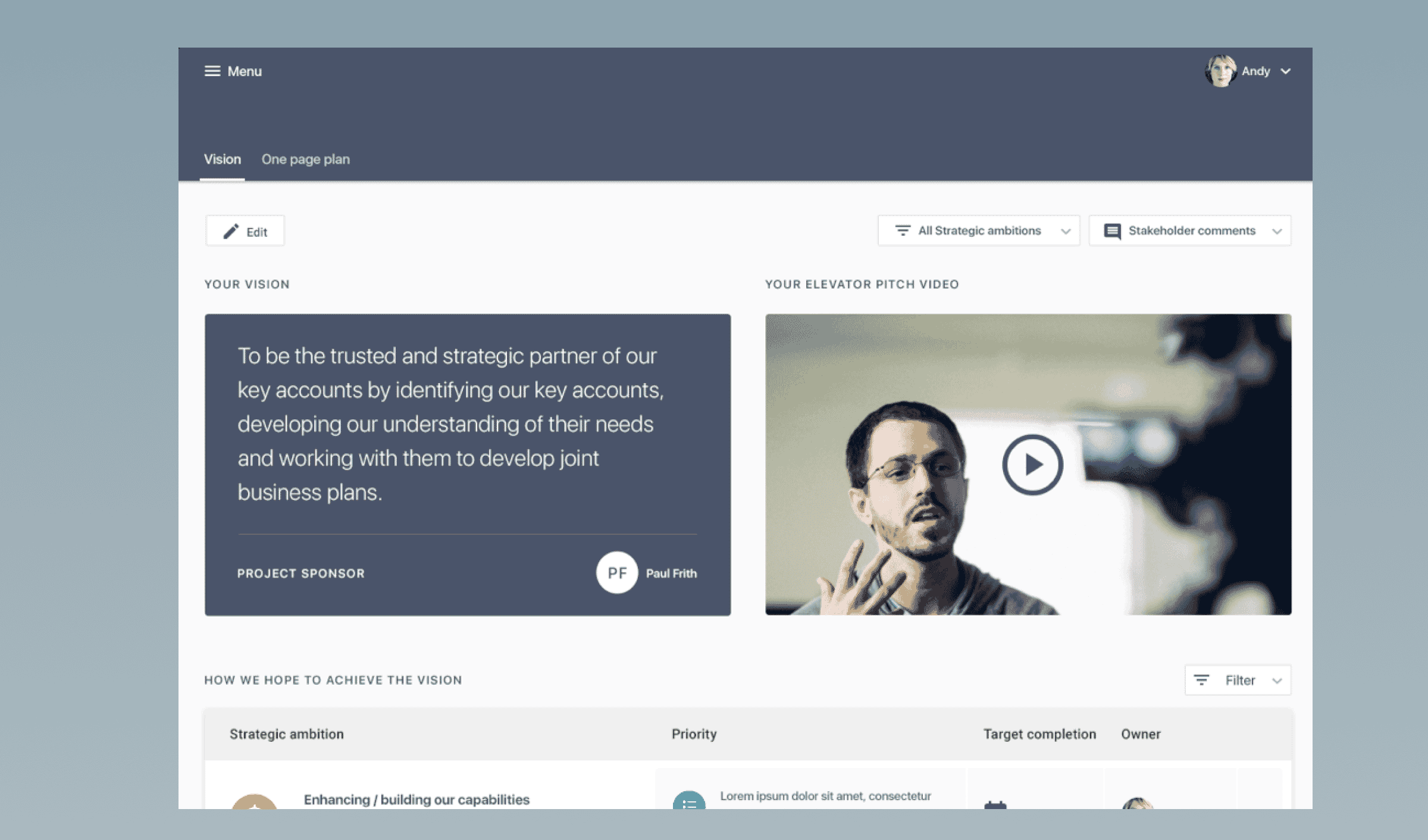
The impact
The Change management planning tool has been used by a top 10 global pharma company to plan a programme that encourages teams in high-potential markets to adopt a more customer-centric way of measuring in-country, regional and global Key Account Organisation performance.
The programme, supported by the change management planning tool produced significant outcomes including the $750,000 in new product sales and the 600% increase in completed procedures.
Our intuitive SaaS design process successfully enhanced both participant engagement and the efficiency of change management processes across teams.
Ed and Rob worked alongside our development team here at Deazy to help us move from offline ideas to an interactive product quickly and efficiently. The team truly supported Agile methodologies so we could design and build the tool iteratively and make the right decisions. We are delighted with the tool and have had some great feedback.
Other client stories



